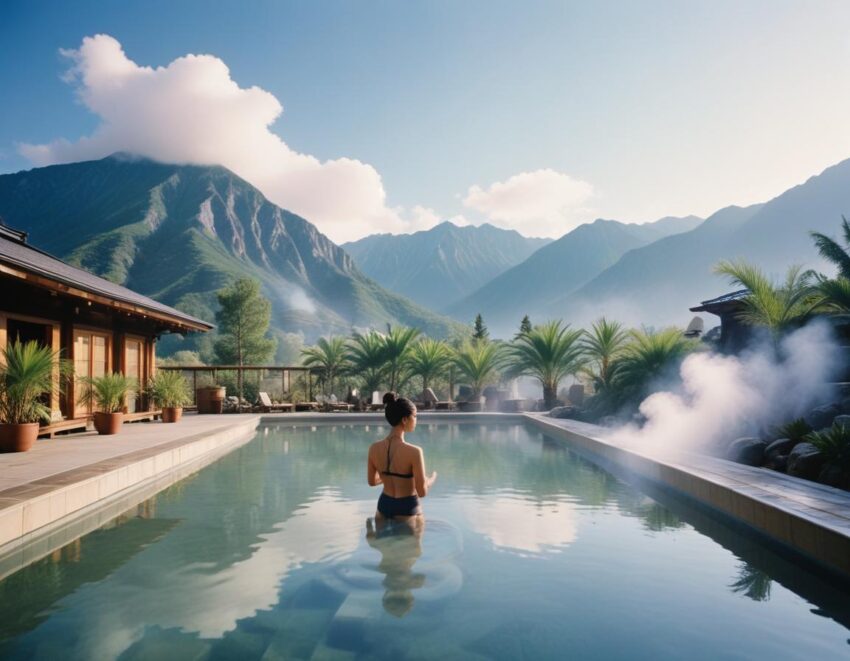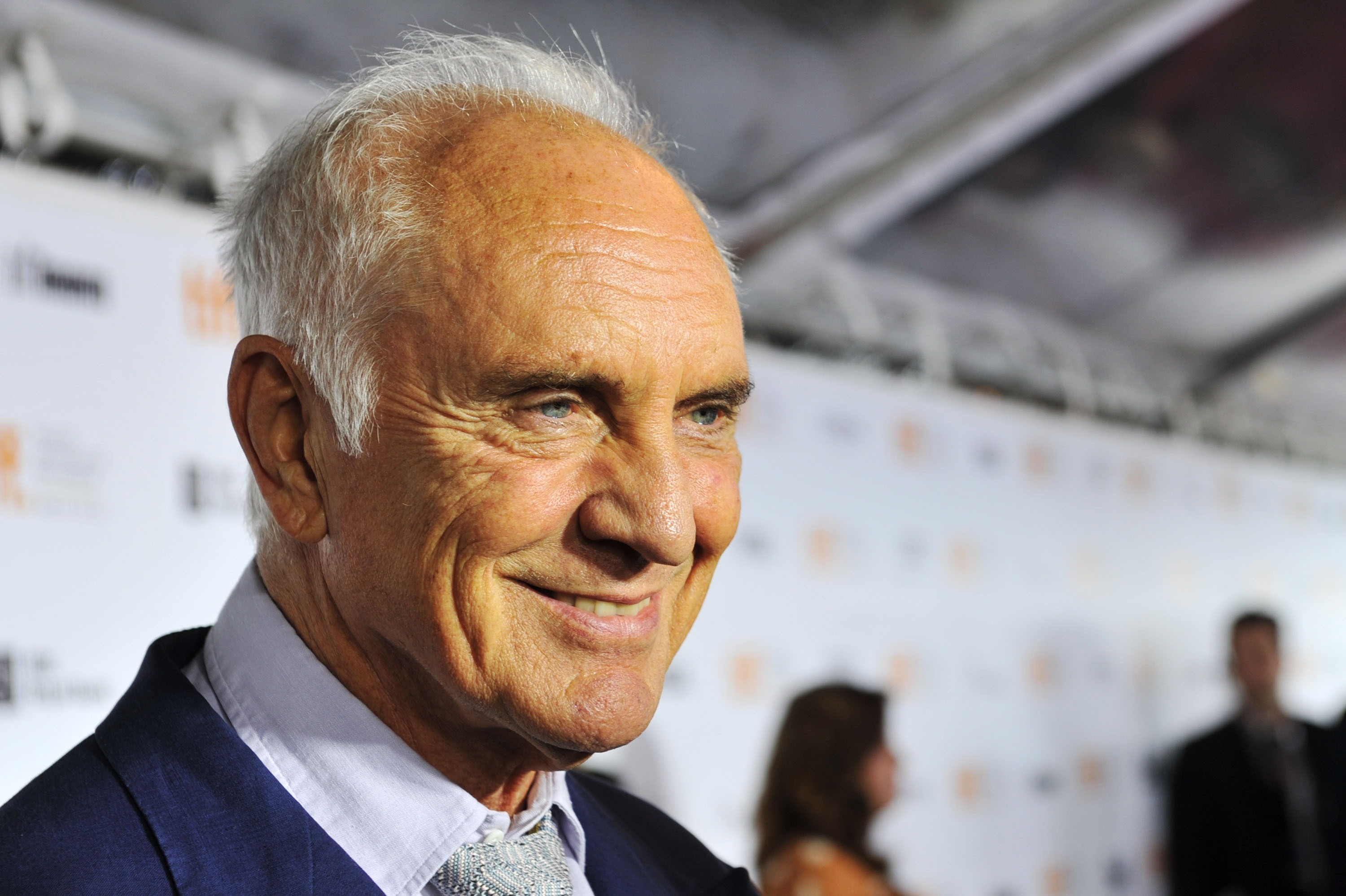
Australia Joins US, Mexico, Germany, France in Supporting Wellness Tourism as Victoria Powers with New Investment Guide, Latest News is Only Here

Australia joins the US, Mexico, Germany, France, and the UAE in supporting wellness tourism, and at the same time Victoria powers ahead with a new investment guide. This latest news shows how Australia joins global leaders like the US, Mexico, Germany, France, and the UAE in building wellness tourism into the heart of their visitor economies. Wellness tourism is not just a trend; it is a growing market worth trillions, and Australia joins the US, Mexico, Germany, France, and the UAE in shaping its future.
Victoria powers wellness tourism growth with bold steps. The new investment guide makes it easier for businesses to create world-class wellness tourism experiences. From mineral springs to thermal baths, from retreats to luxury resorts, Victoria powers its tourism sector with real action. Australia joins the US, Mexico, Germany, France, and the UAE to show that wellness tourism is central to future travel. This latest news is only here, and it proves wellness is now a global force.
Victoria’s wellness tourism sector is growing fast. The Allan Labor Government has launched a new guide to help businesses and investors create world-class wellness experiences. With mineral springs, thermal baths, natural beauty, and cultural attractions, Victoria is ready to lead in Australia’s wellness tourism market. The question now is: how can the state turn this natural advantage into global success?
Wellness Tourism Guide to Drive Investment
The government has released a guide titled A guide to wellness tourism investment: from concept to reality. This document gives operators a clear pathway to develop, plan, and manage wellness businesses. It explains each step of creating experiences focused on health and wellbeing. For tourism operators, the guide is a practical tool. For investors, it shows why Victoria is the right place to put money into wellness tourism.
The release of this guide comes at a time when wellness tourism is one of the fastest-growing global sectors. Industry forecasts say the market will soon be worth more than $1.5 trillion worldwide. Victoria aims to capture part of this demand by positioning itself as the leading wellness destination in Australia.
Why Victoria is Perfect for Wellness Tourism
Victoria has the natural and cultural assets needed for success. The state is home to Australia’s largest concentration of mineral springs in Hepburn and Daylesford. It also offers stunning thermal baths along the coast, including Mornington Peninsula Hot Springs. Visitors can combine spa treatments with sweeping coastal views, making wellness a full sensory experience.
Beyond the water-based attractions, Victoria’s mountains, national parks, and vineyards offer peaceful escapes. The cultural diversity of Melbourne and regional towns also adds a wellness layer through food, art, and community experiences. Together, these elements create a destination that naturally supports health and relaxation.
Wellness as a Pillar of Strategic Growth
The Victorian Government has made wellness one of the five pillars of its Experience Victoria 2033 strategy. This plan aims to lift annual visitor spending to $58 billion by 2033. Wellness sits alongside food, culture, nature, and events as a focus area. By building wellness experiences into its core tourism strategy, Victoria is ensuring the sector has long-term government support.
This pillar approach is important. It shows that wellness is not treated as a niche but as a major driver of the visitor economy. It means funding, planning, and marketing efforts will all align to build the state’s wellness brand.
Big Investments in Wellness Infrastructure
The government is backing its strategy with real investments. The Grampians Wellness Resort Development is a flagship project. It will create a Nordic spa resort in Halls Gap, adding a luxury option to one of the state’s most loved natural regions.
Funding has also been given for a masterplan for the Hepburn Mineral Springs Reserve. This plan will guide how the springs are managed and developed for the future. The aim is to balance visitor growth with environmental care. These projects highlight how wellness infrastructure is now central to Victoria’s tourism development.
Lessons from Global Wellness Tourism
Globally, wellness tourism has become one of the most profitable sectors in travel. Countries like Japan, Iceland, and Thailand are already known for hot springs, spas, and retreats. Victoria wants to join this group and attract both domestic and international travellers.
One global trend is combining wellness with nature and culture. Travellers no longer want only spa treatments; they want holistic experiences. This may include meditation in natural settings, yoga retreats, or cultural therapies rooted in local traditions. Victoria’s combination of Indigenous heritage, multicultural communities, and diverse landscapes puts it in a strong position to compete in this market.
Wellness Tourism Creates Jobs and Growth
The wellness sector does more than attract visitors. It creates jobs across many industries. Spa operators, therapists, chefs, event managers, and tour guides all benefit. Hotels, restaurants, and retail stores also see higher spending.
Victoria’s tourism workforce already supports more than 288,000 jobs, with nearly three-quarters in hospitality, accommodation, and retail. As wellness grows, it will add new skills and opportunities for people across the state. Regional towns in particular will benefit, as wellness resorts and mineral springs often sit outside major cities.
Support for Businesses and Investors
The new wellness guide is designed to support both small operators and large investors. It explains how to turn a concept into reality, from securing land and permits to creating marketable products. For small businesses, it offers clarity on standards and expectations. For investors, it shows where opportunities are strongest and how to access government support.
By giving businesses a roadmap, the government is lowering barriers to entry. This is critical in an industry that can be expensive to develop but highly rewarding if done well. The guide also shows Victoria is serious about attracting capital into wellness tourism.
Quotes Highlight Government Commitment
Minister for Tourism, Sport and Major Events Steve Dimopoulos said Victoria’s natural and cultural attractions make it perfect for wellness tourism. He added that the new guidelines will support businesses in creating products that grow the visitor economy and jobs.
Visit Victoria CEO Brendan McClements echoed these sentiments, pointing out that wellness fits well with Victoria’s brand promise of being “Every bit different”. The combination of spas, mineral springs, and unique cultural offerings positions the state for global success.
Local Government and Industry Input
The wellness guidelines were not created in isolation. They were developed with input from local councils and industry groups. This ensures they reflect real needs and can be applied in practice. Tourism businesses often face challenges when planning new ventures, from zoning rules to environmental approvals. By including local voices, the guide makes the process clearer and more achievable.
Industry input also helps ensure the products being developed will meet market demand. For example, the growing interest in eco-conscious wellness means new resorts must focus on sustainability. This collaboration is essential for building a wellness sector that is both profitable and responsible.
The Road to 2033 and Beyond
The wellness tourism sector is expected to grow strongly in the next decade. By 2033, Victoria aims to capture a significant slice of the global $1.5 trillion market. With government backing, investor interest, and strong natural assets, the state has all the right ingredients.
The key will be delivery. Building new resorts, upgrading mineral springs, and marketing Victoria internationally will all take time. But with a clear strategy and strong partnerships, the state can position itself as Australia’s wellness capital. This will bring long-term benefits for communities, workers, and the economy
Victoria is not just following the wellness tourism trend—it is leading it. With natural springs, thermal baths, rich culture, and bold investments, the state is ready to compete globally. The new wellness tourism guide provides a roadmap for operators and investors. The government’s Experience Victoria 2033 plan sets the vision. The projects in the Grampians and Hepburn show real action.
Wellness is now a pillar of Victoria’s tourism future. It promises growth, jobs, and a stronger visitor economy. For travellers, it means more chances to relax, recharge, and experience Victoria in new ways. For businesses and investors, it means opportunities in one of the fastest-growing tourism markets in the world.
Wellness tourism is no longer a niche. It has become one of the most powerful forces in global travel. Tourists today want more than beaches, shopping, or museums. They want relaxation, healing, and balance. They want holidays that refresh the body and mind. From hot springs in Japan to yoga retreats in India, from spa resorts in Austria to desert wellness in the UAE, the world is racing to capture this booming market. By 2024, wellness tourism spending crossed one trillion US dollars. This article explains which countries lead the movement, why travellers are spending more, and what the future holds.
The Rise of Wellness Tourism
The Global Wellness Institute defines wellness tourism as travel that improves personal wellbeing. It includes two types of trips. The first is primary wellness travel, where health and wellbeing are the main purpose. The second is secondary wellness travel, where tourists add wellness to a general trip. Both are growing fast.
In 2023, wellness tourism accounted for nearly 18 per cent of global tourism spending. Yet it made up less than 8 per cent of trips. That means wellness travellers spend much more than the average tourist. An international wellness visitor spends about 36 per cent more per trip. A domestic wellness traveller spends more than 160 per cent more than a normal domestic tourist. This premium explains why countries are investing heavily in wellness products.
The United States Leads the World
The United States is the clear global leader in wellness tourism. In 2023, wellness travellers spent more than 300 billion US dollars there. This is more than three times higher than the next country on the list. The US combines a huge domestic market with high per-trip spending. Nearly 95 per cent of wellness trips in the US are domestic, as Americans seek spa weekends, yoga retreats, and wellness-focused resorts.
Major destinations include California, with its desert spas and coastal retreats, and Hawaii, with its Mālama programme that links tourism with caring for the islands. The US also has a strong fitness culture, integrative health centres, and luxury wellness brands that attract both locals and international travellers.
Germany and Austria: Europe’s Spa Traditions
Germany ranks second in the world for wellness spending, with nearly 78 billion US dollars in 2023. Austria is also in the top ten, with more than 21 billion. Both countries have a long tradition of thermal baths, medical spas, and alpine wellness.
In Germany, spa towns like Baden-Baden and Wiesbaden have been popular for centuries. They combine mineral waters with medical supervision and luxury services. Austria adds mountain retreats and alpine resorts, where hiking, skiing, and spa treatments are combined. Domestic demand is high, but cross-border travel within Europe also feeds these markets.
China: Big Numbers, Big Growth
China is the third-largest wellness tourism market, with spending of more than 55 billion US dollars. The country also leads in trip volume, with nearly 160 million wellness trips recorded in 2023. Much of this demand is domestic, driven by a rising middle class. Chinese travellers want healthier lifestyles, stress relief, and holistic experiences.
Hot spring resorts, traditional Chinese medicine retreats, and wellness hotels are booming. While international travel slowed during the pandemic, domestic wellness travel in China surged. The country is now investing in new resorts, medical wellness hubs, and spa towns to keep up with demand.
France, Italy and Switzerland: Luxury and Culture
France, Italy, and Switzerland all sit in the global top ten. France recorded 41 billion US dollars in wellness spending in 2023. Italy and Switzerland together added more than 37 billion.
These countries mix culture with wellness. France offers thalassotherapy on its coasts, where sea water and treatments improve health. Italy combines Roman bath traditions with Tuscan spa towns and thermal resorts. Switzerland adds luxury longevity clinics in alpine settings, attracting wealthy travellers from the Middle East, Asia, and Europe. Together, they show how culture, history, and wellness can create powerful tourism products.
Japan and South Korea: Hot Springs and Healing
Japan is another major player, with more than 22 billion US dollars in spending. The country’s hot springs, known as onsen, are world famous. Tourists visit mountain resorts, traditional ryokans, and coastal spas to relax in mineral-rich waters. Wellness in Japan is tied to cultural rituals, from forest bathing to tea ceremonies.
South Korea, though smaller in total spending, had nearly 21 million wellness trips in 2023. Korean wellness is powered by skincare, spas, and beauty tourism. Visitors also seek temple stays and nature retreats. Both countries show how cultural identity can shape global wellness appeal.
India: The Spiritual Hub
India is ranked eleventh by spending, with 16 billion US dollars, but it is one of the largest in trip volume, with more than 100 million wellness trips. India’s strength lies in its heritage. It is the birthplace of yoga and Ayurveda. Millions of travellers come for retreats in Rishikesh, Kerala, and Goa.
Domestic demand is also strong, as India’s growing middle class looks for healthy escapes. The government promotes yoga internationally as a soft power tool. Wellness tourism is central to India’s global travel identity, and its growth potential is enormous.
Thailand, Indonesia and Australia: Asia-Pacific’s Rising Stars
Thailand recorded more than 12 billion US dollars in wellness spending in 2023. It is famous for spa resorts, meditation retreats, and holistic therapies. Bali in Indonesia is another hotspot, with luxury resorts and spiritual healing drawing global visitors.
Australia ranks eighth in the world, with 19 billion US dollars in wellness spending. The country offers coastal spas, mineral springs, and eco-retreats. Its clean environment and unique landscapes make it attractive for international travellers looking for health-focused holidays.
The Middle East Surge: UAE and Turkey
The United Arab Emirates is one of the fastest-growing wellness tourism markets. Spending reached more than 7 billion US dollars in 2023, with just under three million trips. Dubai and Abu Dhabi have invested heavily in luxury spas, desert retreats, and integrative health centres.
Turkey also ranks among the top twenty. It combines hammam traditions with thermal spas and modern resorts. Domestic demand is strong, and the country is well positioned as a regional wellness hub connecting Europe and Asia.
Portugal and Spain: Southern Europe’s Advantage
Portugal and Spain are both in the global top twenty. Portugal recorded more than 6 billion US dollars in wellness spending, while Spain reached nearly 15 billion. Both countries have natural hot springs, coastal thalasso centres, and strong wellness resorts.
The Mediterranean diet, yoga retreats, and sunny climates add to their appeal. Portugal has also positioned wellness as part of its national tourism strategy, investing in spa resorts and coastal wellness experiences.
Why Wellness Travellers Spend More
One of the most important facts is that wellness travellers spend more than average. This happens for three reasons. First, wellness often involves premium services like spa treatments, retreats, and medical therapies. Second, wellness travellers often stay longer to complete programmes or retreats. Third, they are more likely to combine wellness with cultural and luxury experiences.
This higher spend makes wellness tourism valuable to governments and investors. Countries see it as a way to grow tourism revenue without relying only on mass markets.
Challenges and the Future
The wellness tourism boom also brings challenges. Not every project is sustainable. Some destinations risk overdevelopment, which can harm natural resources. Others risk creating wellness products that feel artificial or disconnected from local culture.
The future will depend on authentic experiences. Travellers want real traditions, not manufactured spa products. They also want sustainability. Resorts that protect the environment, use local food, and support communities will stand out.
Another trend is the growth of secondary wellness. Most travellers are not going on pure wellness holidays. Instead, they want to add wellness to a normal trip. Hotels, airlines, and attractions that add wellness layers—such as healthy food, better sleep, or fitness options—will capture this demand.
Wellness tourism is reshaping global travel. The United States leads by spending. Germany and Austria carry Europe’s spa traditions. China and India bring scale and growth. Japan and South Korea add cultural healing. The UAE and Turkey show the Middle East’s rising power. Portugal, Spain, Thailand, and Indonesia round out the global leaders.
With spending now above one trillion US dollars, wellness is not just a trend—it is a pillar of the tourism economy. Countries that offer authentic, sustainable, and holistic experiences will capture the future. For travellers, it means the chance to return home not only with memories, but with better health and renewed energy.
The post Australia Joins US, Mexico, Germany, France in Supporting Wellness Tourism as Victoria Powers with New Investment Guide, Latest News is Only Here appeared first on Travel And Tour World.
Australia Joins US, Mexico, Germany, France in Supporting Wellness Tourism as Victoria Powers with New Investment Guide, Latest News is Only Here
| Divisions of Shy Paris Entertainment | ||||
|---|---|---|---|---|
| Shyparis Entertainment | Shy Paris Bookings | Linkz Radio | Klublinks | Shy Paris |
Shy Paris Bookings is a Division of
❤Shy Paris Entertainment ||||| International Spectacular Events, Stellar Event Planning and Management, & Celebrity Booking Agency. Please contact us as we can provide you with both international and/or local renowned full service event planning and management, & celebrity bookings at shyparisentertainment@gmail.com or
CONTACT: Email: shyparisentertainment@gmail.com
Facebook: ShyParis Youtube: @Shyparis Twitter: @Shyparisent Instagram: shyparisentertainment Whatsapp: 1-437-259-3399
✶✶✶✶✶✶✶✶✶✶✶✶✶✶✶✶✶✶✶✶✶✶✶✶✶✶✶✶✶✶✶✶✶✶✶✶✶✶✶✶✶✶✶✶✶✶✶✶✶✶
SHY PARIS ENTERTAINMENT COMPANIES
✅ ShyParisentertainment.co – https://shyparisentertainment.co
✅ Shyparisbookings.com – https://shyparisbookings.com
✅ Linkzradio.com – https://linkzradio.com
✅ Klublinks.com – https://klublinks.com
✅ Shypariswebdesign.com – https://shypariswebdesign.com
✅ ❤️ Shyparis – htttps://shyparis.com❤️





